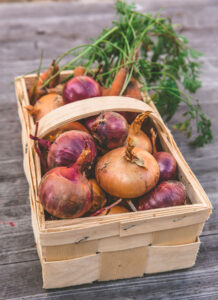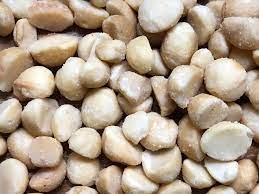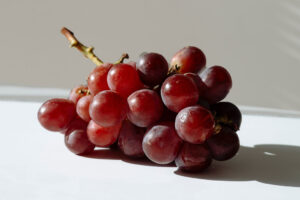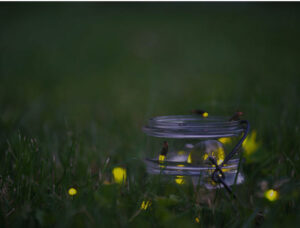Any individual who possesses a pet realizes that pets have no doubts about attempting to eat foreign items they track down lying around the house. Cats bite on different plants, rodents and mice snack for all intents and purposes anything, and dogs work part time as vacuum cleaners when food is dropped on the kitchen floor. However, numerous things that individuals wouldn’t normally think about can really be unbelievably harmful to normal family pets. Pets don’t have similar digestion systems as people; a compound that human bodies can separate easily may end up being deadly in a more modest animal at a similar portion. Here, we will investigate a few food varieties and plants that you may not understand are available in your pet’s compass — and the potential clinical risks.
10. Chocolate

This may not be stunning to numerous pet lovers, but rather pets don’t appreciate the delights of chocolate very as much as people, presumably on the grounds that it kills them. Chocolate contains two firmly related compounds: theobromine (the essential energizer) and caffeine, the two of which are answerable for chocolate’s stimulating impacts. These mixtures help to animate cerebrum and cardiovascular/skeletal muscle action, chiefly by hindering specific cell receptors and proteins and expanding free calcium fixations (which assists with fueling muscles). At high portions, these impacts can cause strong overstimulation, possibly prompting unusual heart rhythms, muscle quakes, looseness of the bowels, anxiety, and cardiovascular breakdown. This appears to be extremely startling, and you might be asking why people don’t fall down and die subsequent to eating a piece of chocolate cake. Truly, people can separate theobromine substantially more rapidly and proficiently than what a canine’s digestion is skilled of. Because chocolate is an extremely normal food thing for sweets and treats, extraordinary consideration ought to be removed from felines, and different animals. Other caffeine-containing items, for example, espresso ought to be avoided pets for comparable reasons. They can cause hurtful overstimulation.
9. Onions

What compels individuals cry and pets pass on? Assuming you addressed onions, you’re shockingly right. Onions (as well as firmly related vegetables like garlic, leeks, and chives) are exceptionally harmful to felines and canines because of mixtures known as N-propyl disulfide and sodium n-propylthiosulfate. At the point when ingested, these synthetics diminish the development of a significant cell reinforcement called glutathione, which eventually causes harmful hydrogen peroxide levels to ascend. Hydrogen peroxide can modify the construction of hemoglobin, a fundamental protein in red platelets that conveys oxygen so it tends to be spread to various pieces of the body. This modification makes hemoglobin proteins disentangle and bunch together, framing clusters called Heinz bodies. Unfortunately, the arrangement of Heinz bodies can make red platelets burst, which expands the gamble of frailty and resulting organ disappointment. People are exceptionally impervious to these incidental effects, yet pets (particularly felines) are profoundly vulnerable to frailty after ingestion. Side effects to pay special attention to incorporate shortcoming, regurgitating, the runs, pale gums, stained pee, and overactive saliva creation.
8. Macadamia Nuts

Macadamia nuts are profoundly esteemed by nibble sweethearts for their high items in minerals, cell reinforcements, and that’s only the tip of the iceberg. Canines can likewise get a couple of reward secondary effects assuming they consume these scrumptious tidbits: spewing, shortcoming or gentle loss of motion, hyperthermia, and muscle tremors. The precise reason for macadamia nut poisonousness in canines is obscure; it is guessed that it very well may be a characteristic item in the actual nuts, something presented during assembling, or harmful contagious side products. With legitimate clinical consideration, macadamia nut harmfulness is by and large treatable, and side effects settle inside 12 to 48 hours, however it’s presumably a savvy thought to not leave heaps of macadamia nuts lying around your home, as enticing as that sounds to nibble lovers
7. Grapes and Raisins

Grapes don’t precisely radiate a quality of risk, however these little snacks have extremely enormous outcomes when ingested by a canine. The specific component of poisonousness is as yet a secret, however it is realized that utilization can make canines foster intense kidney failures. Side effects normally incorporate retching and looseness of the bowels, shortcoming, inappetence, absence of pee creation, and others. Unlike macadamia nuts, this kind of harming is exceptionally serious and frequently lethal. Quick medical attention is required. Assuming the kidneys fail, prognosis becomes fatal. The poisonous response actually happens in seedless and cleaned grapes, suggesting that the lethal reagent is tracked down in the organic product’s tissue. This implies that raisins are similarly hurtful for canines also. Raisins are particularly simple to drop on the floor inconspicuous, so be extra careful while scooping huge small bunches into your mouth during your next snack time.
6. Sugars

In the event that your canine is having a mooched outlook on not having the option to eat chocolate any longer, here’s some thrilling information: Eating candy too is not generally permitted! Xylitol is a sugar liquor generally added to desserts, for example, biting gum and candy as a low-calorie sugar substitute (going with it a famous decision for diabetics). When ingested by canines, in any case, xylitol triggers a huge release of insulin, a compound that prompts cells to take up sugar from the blood. This unexpected flood of insulin streaming into cells can bring about an unexpected diminishing in the canine’s blood glucose, bringing about a condition known as hypoglycemia (low glucose). Side effects of hypoglycemia incorporate seizures, loss of coordination, and vomiting. As in the event that this wasn’t sufficient, Xylitol has additionally been embroiled in canine liver failure. It’s ideal to adhere to canine treats and try not to feed your dog any kind of sweets or biting gum.
5. Lilies

Pet owners realize that felines love to bite on plants for no great explanation specifically. In any case, this apparently harmless trend could rapidly transform into a health related crisis on the off chance that lilies are brought in with the general mish-mash. Different types of lilies (like the Easter lily, tiger lily, Asiatic lily, and others) are incredibly harmful to cats. Consumption of any piece of the plant will cause side effects like spewing, organ failures, parchedness, and strange pee designs. Albeit the specific harmful component, it is realized that the kidney is the poison’s essential objective, and the feline might encounter kidney failures whenever left untreated. In the event that you own a types of lily and are uncertain of its risk, verify whether it’s from the family Lilium or the variety Hemerocallis; these contain the primary harmful species.
4. Avocado

In spite of being a dearest staple at parties and daily fruit overall as guacamole, avocados appear to be harmful to almost everything with the exception of people. Avocado contains a characteristic antifungal substance known as persin, which has been shown to cause heart muscle and mammary organ putrefaction in different species. While felines and canines haven’t been known to display irrefutably factual secondary effects, other potential pets like ponies, bunnies, mice, sheep, have shown hurtful side effects after the ingestion of avocado. Alongside the harmful persin referenced beforehand, the enormous internal seed presents a chocking danger. Birds specifically appear to be amazingly helpless to avocado harming. Side effects incorporate shortcoming, despondency, untidy plumage, hesitance to roost, and respiratory issues.
3. Bread Butter

Getting swollen and biting the dust from liquor harming seems like the sort of death just a human would figure out how to pull off, yet pets can encounter this equivalent destiny in the event that they consume uncooked bread batter made with yeast. Upon utilization, the warm, climate of the stomach can prompt yeast cells to go through ethanol maturation, a metabolic cycle in which sugars are separated into carbon dioxide and ethanol (otherwise known as the liquor in hard beverages).In bread mixture containing maturing yeast, the arrival of carbon dioxide makes bread rise. It is easy to envision the reason why this would be an issue in the event that the mixture was eaten by a pet. The growing mixture might actually cause a gastric blockage and make the creature’s stomach widened and bloated. Furthermore, the ethanol result delivered by maturation will be consumed into the circulation system, causing liquor harming, which can rapidly end up being deadly on the off chance that the pet isn’t raced to the vet. Keep an eye out for side effects, for example, retching, shortcoming, focal sensory system gloom, raised pulse, hypothermia, and an enlarged stomach.
2. Sago Palms

The sago palm looks like a smaller than normal tropical palm tree and would be an apparently honest plant to give your terrace a little tropical taste. Nonetheless, the sago palm is a deceiver. Ingestion of this plant by pets can be incredibly deadly. The plant contains various poisons with changing impacts, the most noticeable being a compound called cycasin. Upon utilization, cycasin is separated into a compound called methylazoxymethanol (or MAM, which is considerably less of a significant piece). This causes liver disappointment by harming liver cells and slowing down the liver’s capacity to deliver glucose. MAM is likewise cancer-causing and can cause unsafe mutations. Common side effects of sago palm includes regurgitating, blood in discharges, e thirst and pee, simple swelling/dying, and neurological signs (seizure, loss of motion, and so forth). Harming has been seen in canines, sheep, dairy cattle, and different creatures. People are additionally known to be defenseless to it. You probably will need to plant real palms in your yard instead of sago palms
1. Fireflies

For all of the reptile lovers out there. Fireflies are normally viewed as an image of regular serenity and excellence, however to specific reptiles, they are delectable, smaller than expected harbingers of death. Fireflies contain self-protection harms called lucibufagins that, when ingested, have demonstrated to be exceptionally deadly to different expected pet reptiles, including chameleons and reptiles like the unshaven winged serpent. Creatures of land and water like frogs are additionally at risk. After eating the bugs, reptiles frequently spew or regurgitation and experience a dull change in skin tone. Before you laugh at the incongruity of a reptile becoming dark subsequent to eating a splendid, gleaming bug, realize that this is a serious issue. As of now, death frequently trails behind around two hours. Stick to taking care of your pet reptile bugs that are known to be protected and nutritious as opposed to taking care of it arbitrary ones you view as in nature. They aren’t adjusted to eating each sort of bug in the world.
